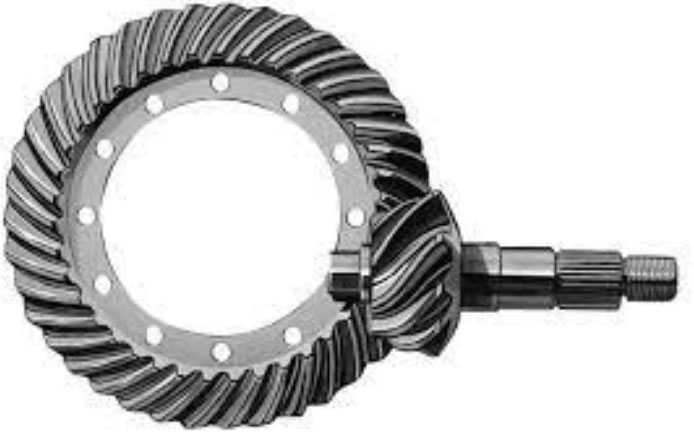Hypoid gears are widely employed in heavy-duty applications where strength, durability, and reliable power transmission are crucial. These gears are specifically designed to handle high torque and heavy loads, making them well-suited for demanding industrial sectors. Let’s explore how hypoid gears excel in heavy-duty applications and contribute to strength and durability.

- High Torque Capacity: Heavy-duty applications often involve the transmission of substantial amounts of torque. Hypoid gears are engineered to handle these high torque loads efficiently. Their unique tooth profile and offset shaft alignment allow for optimized torque transfer, ensuring reliable power transmission even in challenging operating conditions. This capability enables hypoid gears to withstand heavy loads and deliver robust performance in heavy-duty applications such as mining equipment, construction machinery, and industrial gearboxes.
- Load Distribution and Strength: Hypoid gears distribute loads across multiple teeth, resulting in improved load-carrying capacity and increased strength. The gear tooth geometry and the offset shaft alignment help distribute forces more evenly, minimizing stress concentrations and preventing premature gear failure. This load distribution characteristic of hypoid gears makes them ideal for heavy-duty applications that require high strength and durability.
- Robust Construction and Materials: Hypoid gears are constructed using high-quality materials, such as alloy steels, which provide enhanced strength, durability, and resistance to wear and fatigue. These gears are subjected to rigorous manufacturing processes, including precision machining and heat treatment, to optimize their mechanical properties and ensure reliable performance in heavy-duty environments.
- Enhanced Gear Surface Contact: The offset shaft alignment in hypoid gears allows for larger gear tooth contact areas compared to other gear types. This increased contact area results in improved load distribution and reduced contact stresses. The larger contact area also helps to minimize wear and extend the gear’s lifespan, ensuring long-term durability in heavy-duty applications.
- Resistance to Shock and Vibration: Heavy-duty applications often involve significant shock loads and vibrations that can impact gear performance. Hypoid gears are designed to withstand such dynamic forces due to their robust construction and optimized tooth geometry. They have the ability to absorb and dissipate shock and vibration, preventing damage to the gears and ensuring reliable operation in heavy-duty machinery.
- Lubrication and Cooling: Proper lubrication is critical for the longevity and durability of hypoid gears in heavy-duty applications. Effective lubrication systems ensure the formation of a protective film between gear surfaces, reducing friction, minimizing wear, and dissipating heat generated during operation. Adequate cooling mechanisms further contribute to the durability of hypoid gears by preventing overheating and maintaining optimal operating temperatures.
- Resistant to Contaminants: Heavy-duty applications often expose gears to harsh environmental conditions, including dust, dirt, moisture, and contaminants. Hypoid gears are designed to resist the intrusion of these contaminants, ensuring reliable operation and minimizing the risk of gear damage or failure. Protective measures, such as sealing arrangements and surface coatings, are implemented to enhance the gears’ resistance to contaminants in heavy-duty environments.
In conclusion, hypoid gears are well-suited for heavy-duty applications due to their exceptional strength, durability, and reliable power transmission capabilities. Their high torque capacity, optimized load distribution, robust construction, resistance to shock and vibration, effective lubrication, and resistance to contaminants make them ideal for industries that demand reliable and long-lasting performance. Whether in mining, construction, heavy machinery, or industrial sectors, hypoid gears excel in heavy-duty applications, contributing to the strength and durability of the machinery in which they are employed.
